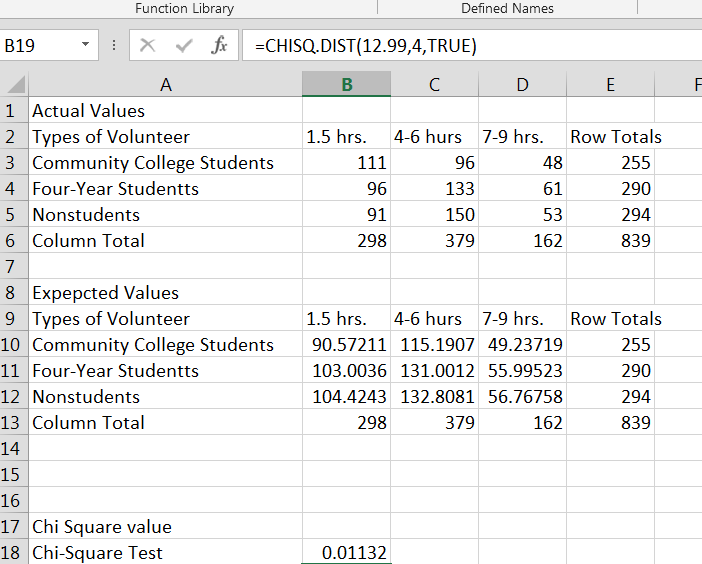
Determination of the expected numbers for each observational class is crucial.There are points to note when testing your hypothesis and calculating Chi Square: Chi-square requires that only numerical values should be used and not percentiles and or ratio. It should be noted that to determine Chi Square, first you need to determine the number expected in each category and the number observed.

This means that the sum of the squared difference between the observed (O in the equation) data and the expected (E) over the expected data in all the possible categories. The expected value within each cell, if the null condition is true, is the product of the row and column total is divided by the overall sample for the test of independence and the sample divided by the number of levels of the single factor for the test of “goodness of fit.” The Chi-Square test of “goodness of fit” is then used to test the hypothesis that the total sample is distributed evenly among all levels of the relevant factor. The Chi-Square test of experiment is used to test for null hypothesis in that the frequencies (entered) within the cells is what is expected, given T. To conduct a Chi Square test, observed frequencies are entered, the sum of the elements within rows and columns (such as those in our calculator) are then computed (call this T).

*The following information is not required to use our calculator, but is rather an in depth look at conducting a Chi Square Test by hand and the statistical process that comes with the resulting data. (This is also the formula that you would use if you needed to calculate statistical association by hand.)

It will tell you if your result is statistically significant or not. The table will output totals for the rows and columns, as well as the Chi-squared result.Fill in the group and category information.Ready to Calculate? Jump Right to the Calculator: It allows you to test out a number of hypothesizes with the aim of finding out if what you see is true, is really true, and for testing for the “goodness of fit” between the observed and expected data after several investigations. That’s where our Chi Square calculator comes in handy.Ĭhi Square is an especially powerful statistical method of assessing the goodness of fit (correlation) between observed values and the ones expected theoretically. Cross tabulation reports (called cross tabs) go a long way in helping to compare and analyze two questions and identify trends and patterns within your data… but determining statistical relevance is another matter.


 0 kommentar(er)
0 kommentar(er)
